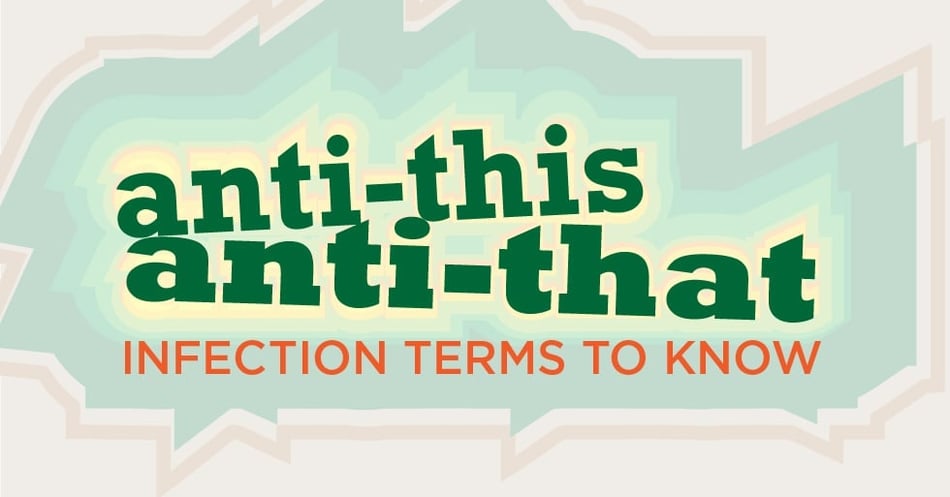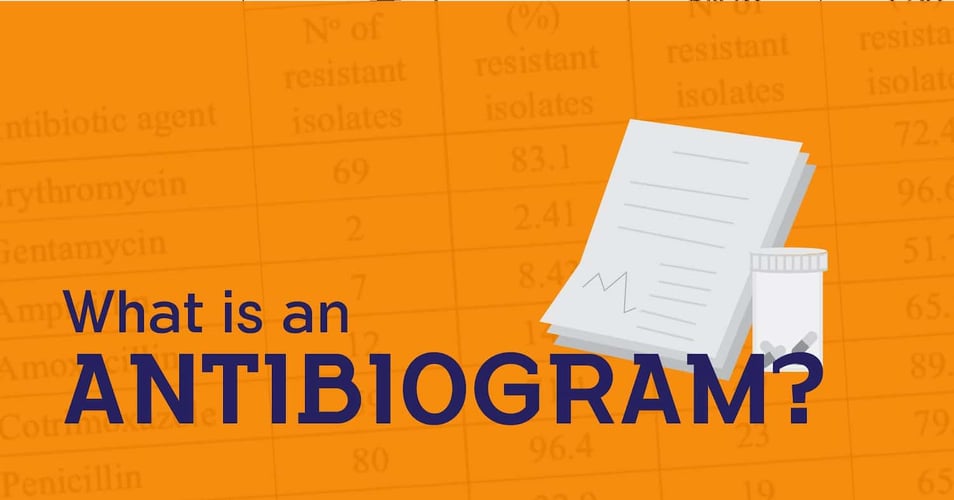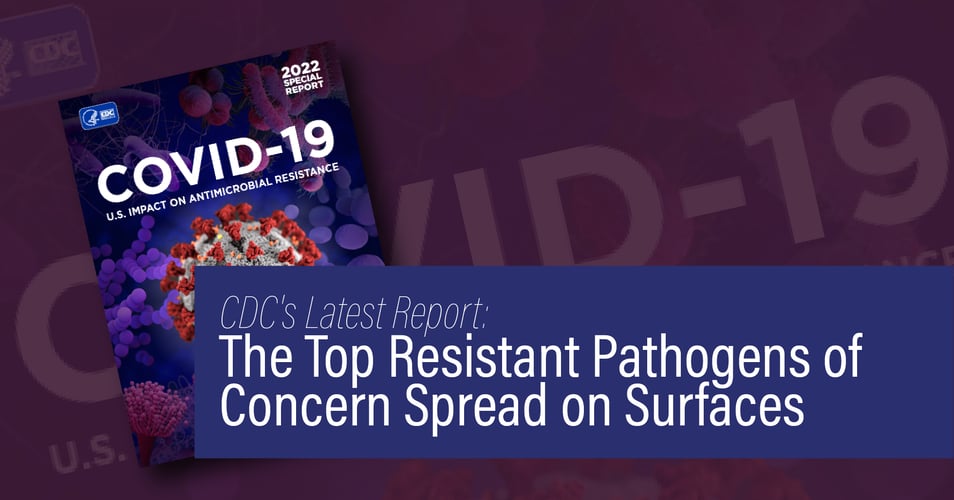4 Key Terms in Infection Control

The infection control landscape is difficult to navigate without an understanding of the key terms used by experts in the field. Some of these terms have found their way into every-day language, but often without the technical nuances that can make a big difference in a health care setting. Today we will start to demystify the terminology of infection control, starting with four "anti" terms.
Antimicrobial
Despite looking like a word that means "kills microbes," an antimicrobial is actually anything that kills OR slows the growth of a microbe. Sometimes you will see the term used to describe a product that actually kills germs. In this case, you should see some kind of EPA registration defining the types of organisms killed. In other cases, you will see the term used to describe products that have antimicrobial properties, but only against odor-causing or mold-causing microbes. Finally, you will sometimes see the term used without any clear evidence of efficacy. To determine the level of antimicrobial activity a product can claim, read the label carefully. Anything claiming to kill harmful microbes must be registered by the EPA for Public Health Claims and will therefore have an EPA Registration number and specific labeling requirements on the product itself.
Antibiotic
An antibiotic is a medicine that has been proven to kill a specific disease-causing bacteria and, when effective, cure the resulting bacterial infection. Antibiotics only work against bacteria, not viruses. The first antibiotic was penicillin, but many more types and classes exist today.
Antibiotic Resistance
Overuse of antibiotics has led to antibiotic resistance, which occurs when enough bacterial cells have a mutation that allows them to survive the antibiotic and then pass that resistance along to future generations. An example of an antibiotic-resistant organism is MRSA, or methycillin-resistant staphococcus aureus. Just imagine their motto being "What doesn't kill us makes us stronger."
Antiseptic
An antiseptic is a substance applied to living tissue to destroy or slow the growth of harmful microbes within the tissue (like a cut or surgical site) such as bacteria. Unlike an antibiotic, it does not travel into body systems. Antiseptics, such as alcohol and iodine, are used to prevent infection, while antibiotics are used to treat an infection.
As consumers, we sometimes have to do a little more work to get to the meaning behind terms used to describe products. Perhaps no more important sector for full knowledge about products is the healthcare industry. We hope this post helped distinguish some terms that are often seen as interchangeable despite being very different.
In next week's post we will take a closer look at hand soaps. Are antibacterial soaps better?
Editor's Note: This post was originally published in December 2014 and has been updated for freshness, accuracy and comprehensiveness.
![EOScu Logo - Dark - Outlined [07182023]-01](https://blog.eoscu.com/hubfs/Eoscu_June2024/Images/EOScu%20Logo%20-%20Dark%20-%20Outlined%20%5B07182023%5D-01.svg)

![[infographic] Antimicrobial Market Segmentation Download and share!](https://no-cache.hubspot.com/cta/default/216314/interactive-178566399573.png)



